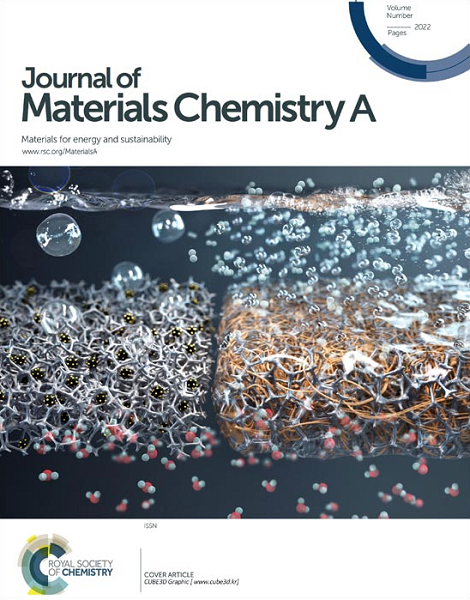CdS纳米羽毛通过直接电子-质子耦合实现了辅酶NAD(P)H的高效无电子介质光催化再生
IF 9.5
2区 材料科学
Q1 CHEMISTRY, PHYSICAL
引用次数: 0
摘要
辅酶NAD(P)H的光催化再生是能量代谢和还原性生物合成所必需的。传统的系统依赖于贵金属电子介质的间接电子耦合质子转移,增加了复杂性和成本。在这里,我们证明了CdS纳米羽毛光催化剂可以在没有电子介质的情况下实现可见光光催化辅酶NAD(P)H的再生。在可见光照射下,CdS纳米羽毛光催化剂的NAD+转化率达到66.0% (1h),对生理活性产物1,4- nadh的选择性为70.5%。当使用电子介质时,NAD+转化率为72.7% (1h)。此外,底物类型的扩展表明另一种辅酶NADPH也可以在没有电子介质的帮助下有效地再生。独特的形态有利于有效的电荷分离和快速迁移,满足NAD(P)H再生对电子浓度的要求。机理研究表明,该过程涉及电子-质子-电子的阶梯式转移,其特征为直接电子-质子耦合转移。NADH的产生途径为NAD+→NAD•→烯醇-NADH•+→烯醇-NADH→1,4-NADH,与依赖电子介质的间接电子传递机制有本质区别。本文介绍了可见光光催化辅酶NAD(P)H再生,无电子介质,实现竞争性转化。本文章由计算机程序翻译,如有差异,请以英文原文为准。
CdS nanofeathers enable efficient electron-mediator-free photocatalytic regeneration of coenzyme NAD(P)H via direct electron-proton coupling
Photocatalytic regeneration of coenzyme NAD(P)H is essential for energy metabolism and reductive biosynthesis. Traditional systems depend on indirect electron-coupled proton transfer with precious metal-based electron mediators, adding complexity and cost. Here, we demonstrate that CdS nanofeather photocatalysts can achieve visible-light photocatalytic coenzyme NAD(P)H regeneration without electron mediators. Under visible-light irradiation, the NAD+ conversion of the CdS nanofeather photocatalyst reached 66.0% (1h), showing 70.5% selectivity for the physiologically active product 1,4-NADH. When electron mediators are used, the NAD+ conversion is 72.7% (1h). Furthermore, the expansion of substrate types indicates that another coenzyme, NADPH, also can be effectively regenerated without the assistance of an electron mediator. The unique morphology facilitates efficient charge separation and rapid migration, satisfying the electron concentration demands for NAD(P)H regeneration. Mechanistic studies show that the process involves stepwise electron-proton-electron transfer characterized by direct electron-coupled proton transfer. NADH is produced via the pathway NAD+ → NAD• → enol-NADH•+ → enol-NADH → 1,4-NADH, fundamentally differing from the indirect electron transfer mechanism that relies on electron mediators. This work introduces visible-light photocatalytic coenzyme NAD(P)H regeneration without electron mediators, achieving competitive conversion.
求助全文
通过发布文献求助,成功后即可免费获取论文全文。
去求助
来源期刊

Journal of Materials Chemistry A
CHEMISTRY, PHYSICAL-ENERGY & FUELS
CiteScore
19.50
自引率
5.00%
发文量
1892
审稿时长
1.5 months
期刊介绍:
The Journal of Materials Chemistry A, B & C covers a wide range of high-quality studies in the field of materials chemistry, with each section focusing on specific applications of the materials studied. Journal of Materials Chemistry A emphasizes applications in energy and sustainability, including topics such as artificial photosynthesis, batteries, and fuel cells. Journal of Materials Chemistry B focuses on applications in biology and medicine, while Journal of Materials Chemistry C covers applications in optical, magnetic, and electronic devices. Example topic areas within the scope of Journal of Materials Chemistry A include catalysis, green/sustainable materials, sensors, and water treatment, among others.
 求助内容:
求助内容: 应助结果提醒方式:
应助结果提醒方式:


